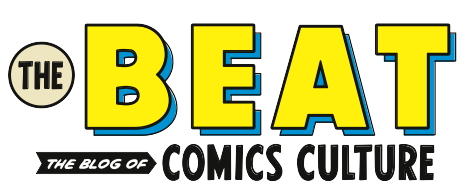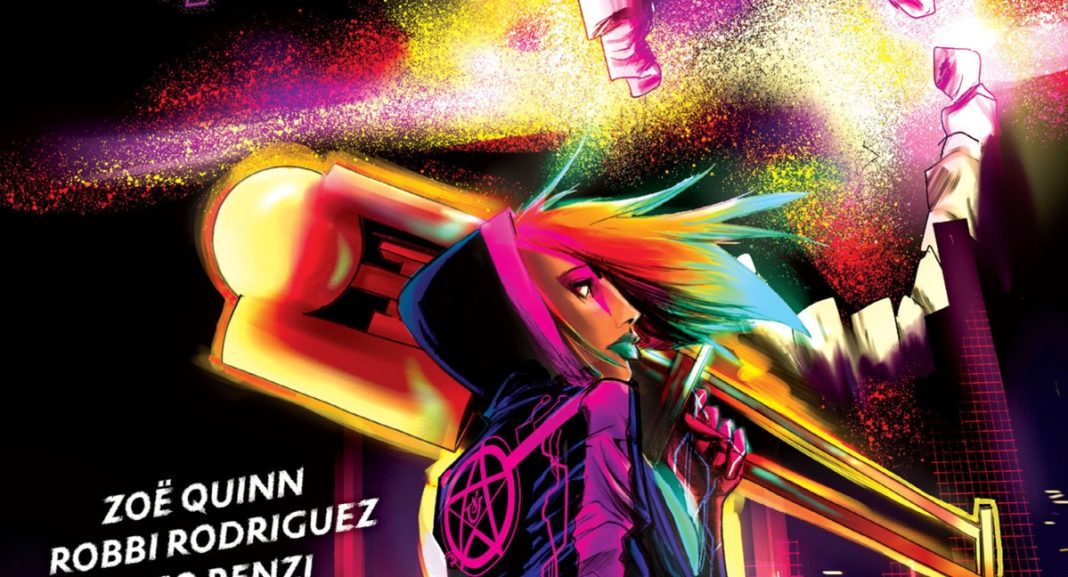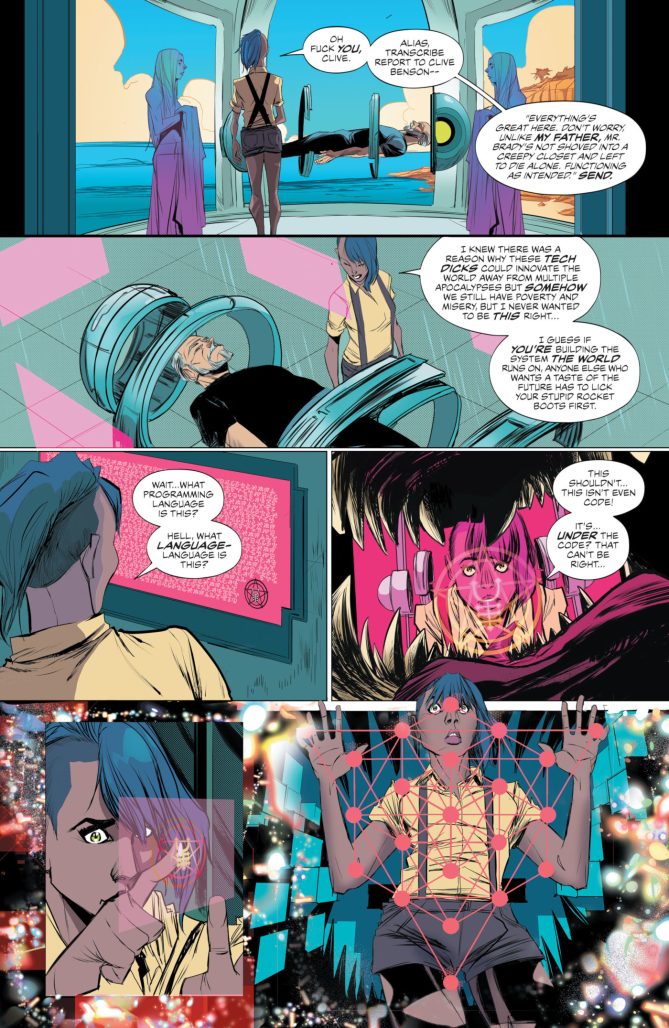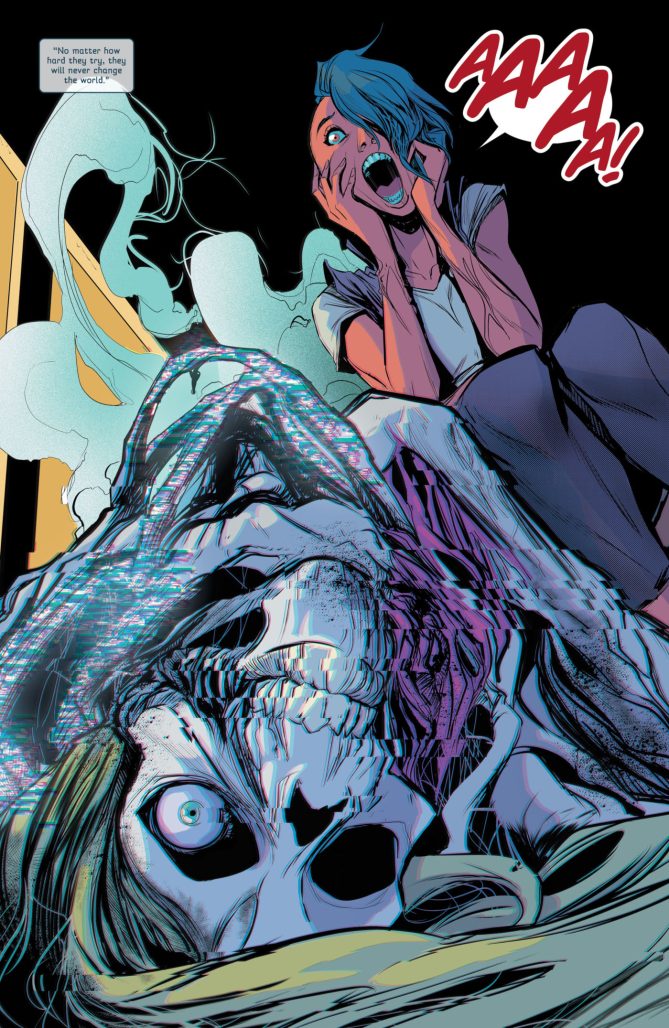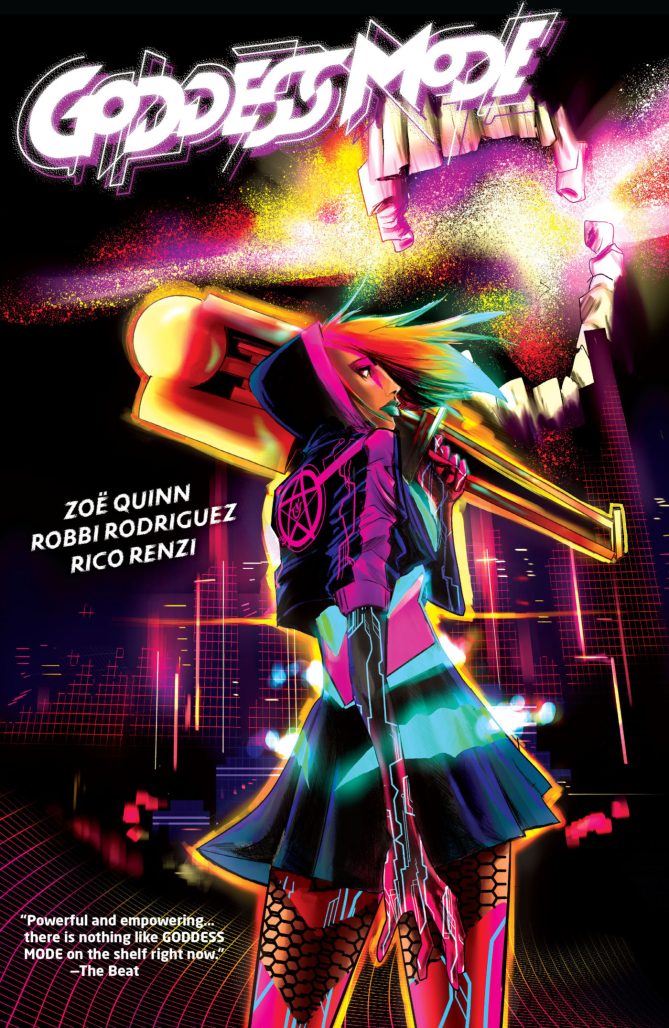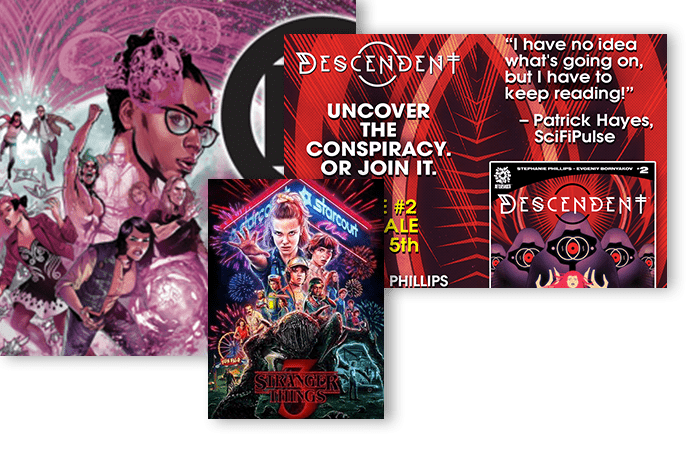Next up within my look at late Vertigo is a book that had some of the built in pre-controversy. Not the religious or sex angle of the two books that were ultimately released by other publishers, but as part of the so-called “culture war”. And arguably an incendiary point for where gamers and younger demographics possibly lost their empathy and veered hard right. Although I do think it is important to understand what happened, I don’t think it has any bearing on the comic itself. And, unlike times where a person’s actions outside of their work can have negative implications of supporting that work, this isn’t one of those cases.
“Great, so I just have to fight off hellbeasts, save my dad and keep my potentially murderous boss happy enough to keep me out of jail…”
Goddess Mode by Zoë Quinn, Robbi Rodriguez, Rico Renzi, and Simon Bowland hits right in the bread and butter of a traditional Vertigo series: magic with a modern spin. Or technically a futuristic spin, since the book has a cyberpunk edge of the near future where an augmented reality network and nano-machines now run our lives. Cassandra Price gets sucked into a technological mystery of the network and discovers a rabbit hole that goes much deeper.
The world-building here is fairly complex. There’s the framework of the digital world, the nature of magic, fairy tales, and family relationships that get touched on in various different ways. At times it feels like Zoë Quinn is laying on the exposition pretty thick, and I feel like some of the connections are necessarily explored in a natural way, but it feels like the book was short on time and it was necessary to get everything in.
There are some interesting allusions in character names against mythology, such as Cassandra herself, being a character from myth as an oracle that wasn’t believed. The connotations of Psyche being the avatar in the digital world, when you consider the fable of Cupid and Psyche. Or that the map of the network looks like an expanded version of the Tree of Life. All adding nice flavours to the world behind the surface story.
Robbi Rodriguez and Rico Renzi create the same kind of magic with the art here that they did on Spider-Gwen. There’s a scratchy frenetic feel to Rodriguez’s linework, making everything consistently feel in motion. With some fairly interesting designs for the characters as they inhabit the cyberpunk world. Given a neon glow with Renzi’s colours. The bright blues, pinks, and greens, along with some interesting ghostly effects, really make the art engrossing.
That overall feel of the world greatly enhanced even further by Simon Bowland’s letters, giving some unique word balloons for digital characters and the incorporation of the group chat for the oracles. It’s one of those books that really feels like visual design was at the top of their minds when creating it.
“You’re right. I’m not any one thing—I’m many. We all are.”
I feel like there was rich ground planted in Goddess Mode by Quinn, Rodriguez, Renzi, and Bowland. And, don’t get me wrong, there is a solid complete story of a young woman finding herself and saving the world, with a satisfying conclusion. But it feels like it should have been much more. Like Hex Wives, and really all of the last wave of Vertigo, it feels like there was a good foundation for a much longer series. That there was a much, much bigger story that wanted to be told here and would have greatly benefited from room to breathe.
Classic Comic Compendium: GODDESS MODE
Goddess Mode
Writer: Zoë Quinn
Artist: Robbi Rodriguez
Colourist: Rico Renzi
Letterer: Simon Bowland
Publisher: DC Comics – Vertigo
Release Date: December 12 2018 – June 19 2019
Read past entries in the Classic Comic Compendium!
Check out other recent review pieces from The Beat!


